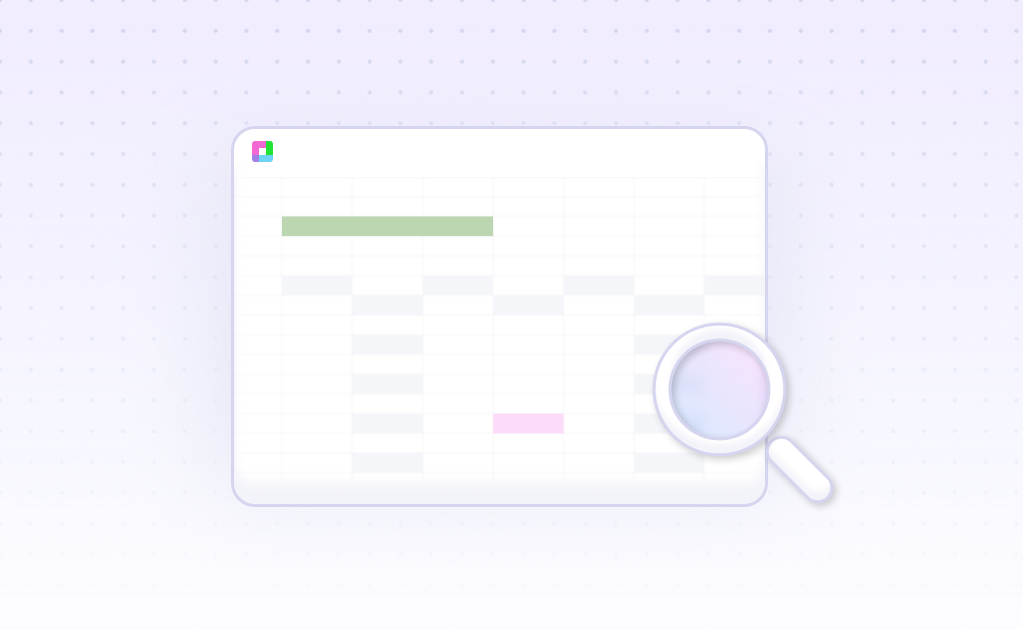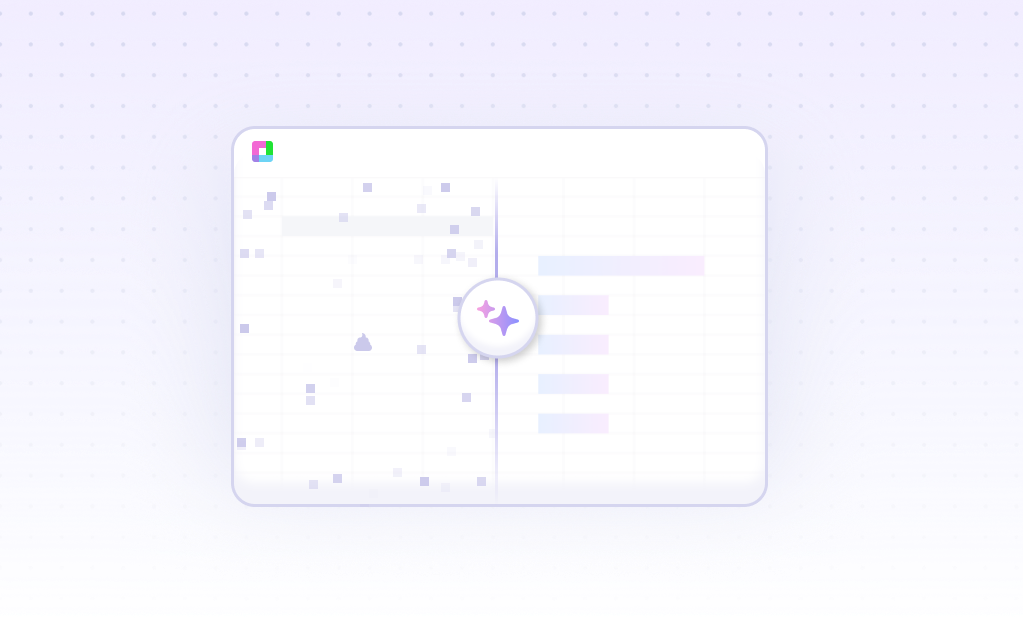
Engineering economics bridges the gap between technical feasibility and financial viability. Whether you're evaluating a new manufacturing process, comparing equipment alternatives, or justifying infrastructure investments, the numbers need to tell a compelling story.
Traditional engineering economics analysis often gets bogged down in complex formulas and manual calculations. Sourcetable transforms this process by combining the familiar spreadsheet interface with AI-powered insights, making sophisticated economic analysis accessible to every engineering professional.
Why Engineering Economics Analysis Matters
Every engineering decision has economic implications. A manufacturing engineer choosing between two production lines, a civil engineer evaluating bridge design alternatives, or a software engineer assessing cloud infrastructure options—they're all making economic decisions wrapped in technical complexity.
Consider a typical scenario: A manufacturing company needs to decide between upgrading existing equipment or purchasing new machinery. The technical specifications are clear, but the economic picture involves initial costs, operating expenses, maintenance schedules, productivity gains, and salvage values over different time horizons.
Without proper economic analysis, engineers often rely on intuition or simple payback calculations. This approach can lead to suboptimal decisions that look good on paper but fail to deliver expected returns.
Why Choose Sourcetable for Engineering Economics
Discover the key benefits
AI-Powered Calculations
Automatically compute present value, future value, IRR, and NPV with natural language commands. No more hunting for formulas.
Scenario Modeling
Compare multiple alternatives side-by-side with dynamic what-if analysis. Change assumptions and see results instantly.
Visual Decision Support
Generate professional charts and graphs that clearly communicate economic trade-offs to stakeholders and management.
Professional Templates
Start with industry-standard templates for common engineering economics problems, then customize for your specific needs.
Sensitivity Analysis
Understand how changes in key variables affect your economic conclusions. Identify critical factors and risk areas.
Integration Ready
Import data from engineering software, ERP systems, and databases. Export results to reports and presentations seamlessly.
Real-World Engineering Economics Applications
See how engineering professionals use Sourcetable to solve complex economic analysis challenges across different industries and project types.
Equipment Replacement Analysis
A process engineer at a chemical plant needs to evaluate when to replace aging reactors. Using Sourcetable, they model the economic life of equipment considering increasing maintenance costs, declining efficiency, and technological obsolescence. The analysis reveals the optimal replacement timing that minimizes total cost of ownership.
Manufacturing Process Optimization
A production team is choosing between three different automation solutions for their assembly line. Each option has different capital costs, operating expenses, and productivity benefits. Sourcetable's AI helps calculate the equivalent annual cost for each alternative, accounting for different project lives and salvage values.
Infrastructure Investment Justification
A municipal engineer needs to justify a new water treatment facility to city council. The analysis must consider construction costs, operating expenses, regulatory compliance benefits, and social impact. Sourcetable helps present the economic case with clear visualizations and sensitivity analysis for key assumptions.
Energy Efficiency Projects
A facilities engineer evaluates LED lighting upgrades across multiple buildings. The analysis includes upfront costs, energy savings, maintenance reductions, and utility rebates. Sourcetable calculates payback periods and net present value for different implementation phases, helping prioritize which buildings to upgrade first.
Research & Development Investment
An R&D manager must allocate limited budget among competing research projects. Each project has different success probabilities, development costs, and potential market returns. Using Monte Carlo simulation in Sourcetable, they model the expected value and risk profile of each investment option.
Lease vs. Buy Decisions
A construction company evaluates whether to lease or purchase heavy equipment. The analysis considers purchase price, loan terms, lease payments, tax implications, and residual values. Sourcetable's after-tax cash flow analysis reveals the most cost-effective financing approach for different equipment types.
Engineering Economics Analysis in 4 Steps
Discover the key benefits
Define the Problem
Start by clearly stating your engineering economics question. Are you comparing alternatives, evaluating a single investment, or optimizing a design parameter? Sourcetable's templates guide you through problem definition with industry-standard frameworks.
Input Your Data
Enter costs, revenues, timing, and other economic factors. Import data from existing systems or use Sourcetable's AI to help estimate missing values based on industry benchmarks and historical patterns.
Run the Analysis
Let Sourcetable calculate all the standard engineering economics metrics: present worth, annual worth, future worth, rate of return, payback period, and benefit-cost ratio. The AI explains each calculation and its significance.
Interpret Results
Review automated insights and recommendations. Generate professional charts and tables for reports. Perform sensitivity analysis to understand how changes in assumptions affect your conclusions.
Step-by-Step Examples
Example 1: Equipment Selection Analysis
A manufacturing engineer needs to choose between two packaging machines:
Using Sourcetable's engineering economics template:
The analysis reveals that Machine A has an EAC of $16,372 while Machine B has an EAC of $18,527, making Machine A the economically superior choice despite its higher initial cost.
Example 2: Project Feasibility Study
A civil engineer evaluates a proposed bridge project with the following characteristics:
Sourcetable calculates the benefit-cost ratio and net present value, accounting for the irregular renovation schedule. The AI helps interpret whether the project meets economic feasibility criteria and identifies which assumptions have the greatest impact on the conclusion.
Example 3: Make vs. Buy Analysis
An aerospace engineer must decide whether to manufacture a component in-house or purchase from a supplier:
Make Option: $75,000 equipment cost, $12 per unit variable cost, $15,000 annual fixed costs
Buy Option: $28 per unit from supplier
Using Sourcetable, the engineer models different production volumes to find the break-even point and evaluates the decision under uncertain demand scenarios. The analysis includes risk assessment and identifies the volume threshold where each option becomes preferred.
Frequently Asked Questions
What engineering economics methods does Sourcetable support?
Sourcetable supports all standard engineering economics methods including present worth, future worth, annual worth, rate of return, payback period, benefit-cost ratio, and equivalent annual cost analysis. It also handles more advanced techniques like Monte Carlo simulation for risk analysis and optimization for multi-criteria decisions.
Can I handle inflation and escalation in my analysis?
Yes, Sourcetable can incorporate inflation, escalation rates, and real vs. nominal interest rates into your analysis. The AI helps you understand when to use real vs. nominal approaches and automatically adjusts cash flows for different inflation scenarios.
How does Sourcetable handle different project lives in alternative comparisons?
Sourcetable automatically handles unequal project lives using either the equivalent annual cost method or the least common multiple approach. The AI recommends the most appropriate method based on your specific situation and explains the reasoning behind the choice.
Can I perform sensitivity and risk analysis?
Absolutely. Sourcetable includes built-in sensitivity analysis tools that show how changes in key variables affect your economic conclusions. You can also perform Monte Carlo simulation to model uncertainty in project parameters and assess the probability of different outcomes.
What about tax considerations in engineering economics?
Sourcetable can incorporate tax effects including depreciation methods (MACRS, straight-line, declining balance), tax rates, and after-tax cash flow analysis. The AI guides you through tax calculations and explains how different depreciation methods affect project economics.
How do I handle multiple criteria beyond just economics?
While Sourcetable excels at economic analysis, it also supports multi-criteria decision analysis where you can weight economic factors alongside technical, environmental, or social considerations. This is particularly useful for public sector projects or corporate sustainability initiatives.
Can I create professional reports from my analysis?
Yes, Sourcetable automatically generates professional charts, tables, and summary reports from your engineering economics analysis. You can export these directly to presentations, reports, or share them with stakeholders who need to understand your recommendations.
What if I need to update my analysis with new data?
Sourcetable makes it easy to update your analysis as new information becomes available. Simply modify the inputs and all calculations, charts, and conclusions update automatically. This is particularly valuable for ongoing project evaluation and monitoring.
Frequently Asked Questions
If your question is not covered here, you can contact our team.
Contact Us




